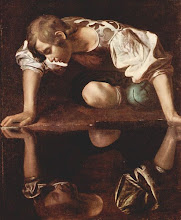Later Mercury falls in love with Herse, one of Aglauros's sisters. He comes for a visit, and meets Aglauros, who agrees to help him -- for a price. Minerva is horrified that this woman who disobeyed her will be in Mercury's good books and will be rich as well. Minerva goes to Envy and asks her to touch Aglauros, who then, envying her sister's good fortune, tries to bar Mercury's way. Mercury turns her to stone. Tony Kline's translation of Ovid's version of the story.


Let's look first at pictures of Aglauros and her sisters with Erichthonius (aka Erechtheus), the child with the snake or snake's tail. I haven't been able to find the whereabouts of the upper picture, painted in 1620 by Jasper van der Laanen, although it was sold at auction quite recently. The slightly later picture (1635-40) below it is by Jacob Jordaens (now in the Kunsthistorisches Museum in Vienna). Rubens also painted a picture on this theme just before van der Laanen (now in the Liechtenstein Museum).
The moment when Mercury, flying over Attica, first sees Herse has proved popular with artists. Jacob Pynas, who painted Mercury and Battus, also painted Mercury and Herse at around the same time in 1618 (painting now in Florence's Uffizi Gallery but not on their website). Thomas Blanchet's Mercury and Herse (1650) is now in the Portland Art Museum where its provenance is currently under investigation to see whether it was looted during the Second World War. Jan or Johann Boeckhorst also painted a Mercury and Hermes in the early 1650s (now in Vienna's Kunsthistorische Museum) Gerard Hoet's Mercury and Herse (1710) is now in Pasadena's Norton Simon Museum.
More unusually, Karel Dujardin painted this 1652 picture of Minerva visiting Envy (now in Vienna's Gemäldegalerie der Akademie der bildende Künste, but not as far as I can tell on its website).
 Veronese painted a picture of Aglauros blocking Mercury's way to Herse in the late 1570s or early 1580s (now in Cambridge's Fitzwilliam Museum). Carel Fabritius painted the picture on the right, which shows Aglauros blocking Mercury's way (1646, now in Boston's Museum of Fine Arts). (The two pictures above are in the public domain from wikipedia, the one on the right is also in the public domain and is from museumsyndicate)
Veronese painted a picture of Aglauros blocking Mercury's way to Herse in the late 1570s or early 1580s (now in Cambridge's Fitzwilliam Museum). Carel Fabritius painted the picture on the right, which shows Aglauros blocking Mercury's way (1646, now in Boston's Museum of Fine Arts). (The two pictures above are in the public domain from wikipedia, the one on the right is also in the public domain and is from museumsyndicate)





No comments:
Post a Comment